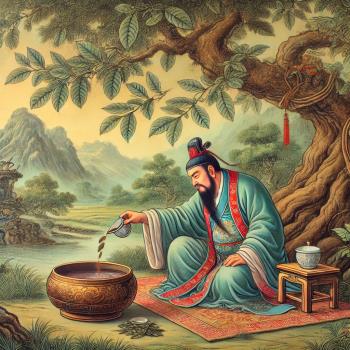
The History of Tea: From Legends to Global Popularity
Tea is one of the oldest and most consumed beverages in the world, with a long and fascinating history. It has played a significant role in various cultures, from China and Japan to Europe and the Middle East. Here, we explore the journey of tea from its origins to becoming a global drink.
The Legendary Origins of Tea in China
The origins of tea trace back to ancient China, with one of the earliest legends attributed to the Chinese emperor Shen Nong. It is said that in 2737 BCE, Shen Nong, known as the "Father of Agriculture and Herbal Medicine in China," was resting under a tree when a few leaves fell into his pot of boiling water. As he drank the infusion, he found it refreshing and energizing. This discovery marked the beginning of tea as a cherished beverage, which gradually became an integral part of Chinese culture.
The Spread of Tea in China and Asia
Tea quickly gained popularity across different social classes in China. During the Han Dynasty (206 BCE - 220 CE), tea was primarily used as an herbal medicine. However, by the time of the Tang Dynasty (618-907 CE), it had become a staple social drink.
Buddhist monks, who sought increased focus and reduced fatigue during meditation, embraced tea as an ideal beverage. These monks later carried tea to Japan, where it evolved into a ceremonial practice known as "Chanoyu" or the Japanese tea ceremony.
Tea Reaches the Middle East and Europe
By the 9th century, tea had made its way to the Middle East and Persia through trade routes. Arab and Persian merchants recognized its value and introduced it to their societies, where it quickly became a prized drink.
Tea arrived in Europe during the 16th and 17th centuries, brought by Portuguese and Dutch traders. Initially, tea was an expensive luxury, enjoyed only by the aristocracy. However, as the British began cultivating tea in India during the 18th century, it became more accessible and widespread in Europe.
Tea in India and the British Empire
The British, captivated by tea, sought to reduce their reliance on Chinese imports by growing tea in India and Sri Lanka (formerly Ceylon) during the 19th century. They discovered a native tea plant in Assam, India, and began large-scale cultivation, making India one of the world's largest tea producers.
Tea became deeply embedded in British culture, giving rise to traditions like "Afternoon Tea," a social custom still widely practiced in England today.
Tea in the Modern World
Today, tea is not just a beverage but an essential part of many cultures worldwide. Countries such as China, India, Sri Lanka, Japan, and Kenya are among the largest tea producers.
Tea is available in various forms, including black tea, green tea, white tea, and oolong tea, each with distinct characteristics. Every country has unique tea-drinking customs—for example, the Japanese meticulously prepare green tea, while Indians brew Masala Chai with spices for a rich and flavorful experience.
Conclusion
From a chance discovery in ancient China to becoming a globally loved drink, tea has a remarkable history. Beyond its delightful taste, tea offers numerous health benefits and remains a vital cultural tradition worldwide. Whether through Japan’s tea ceremonies, England’s afternoon tea, or the comforting cups of tea in Middle Eastern homes, this drink continues to connect people across generations and borders.

